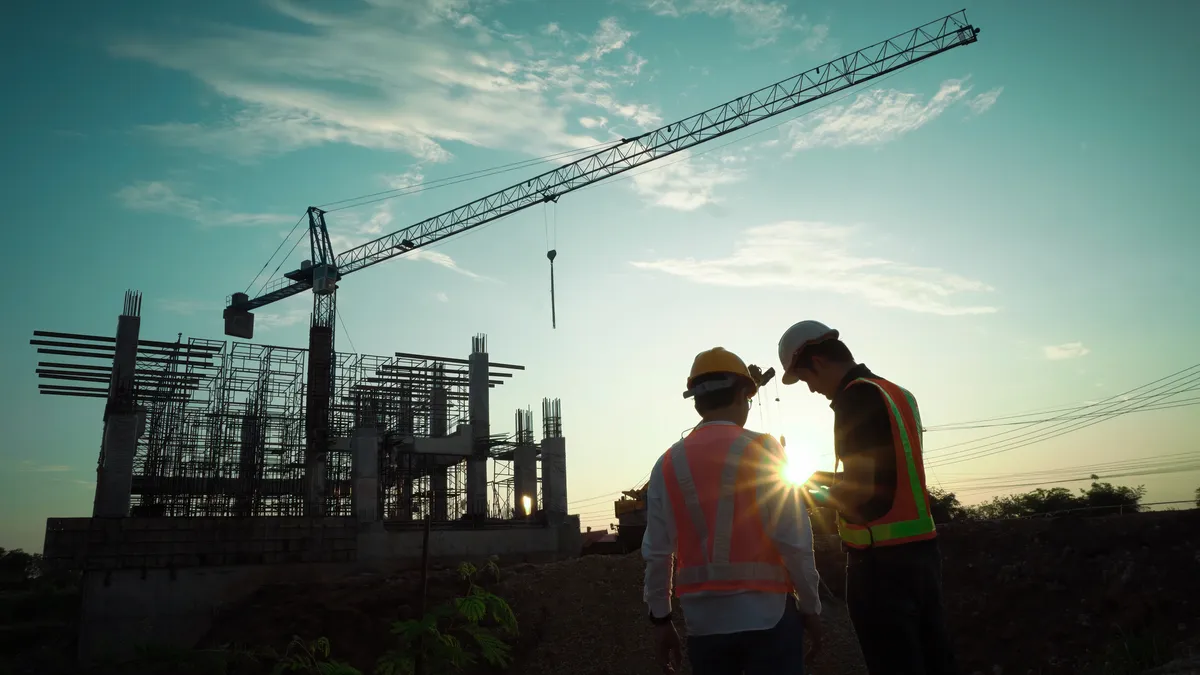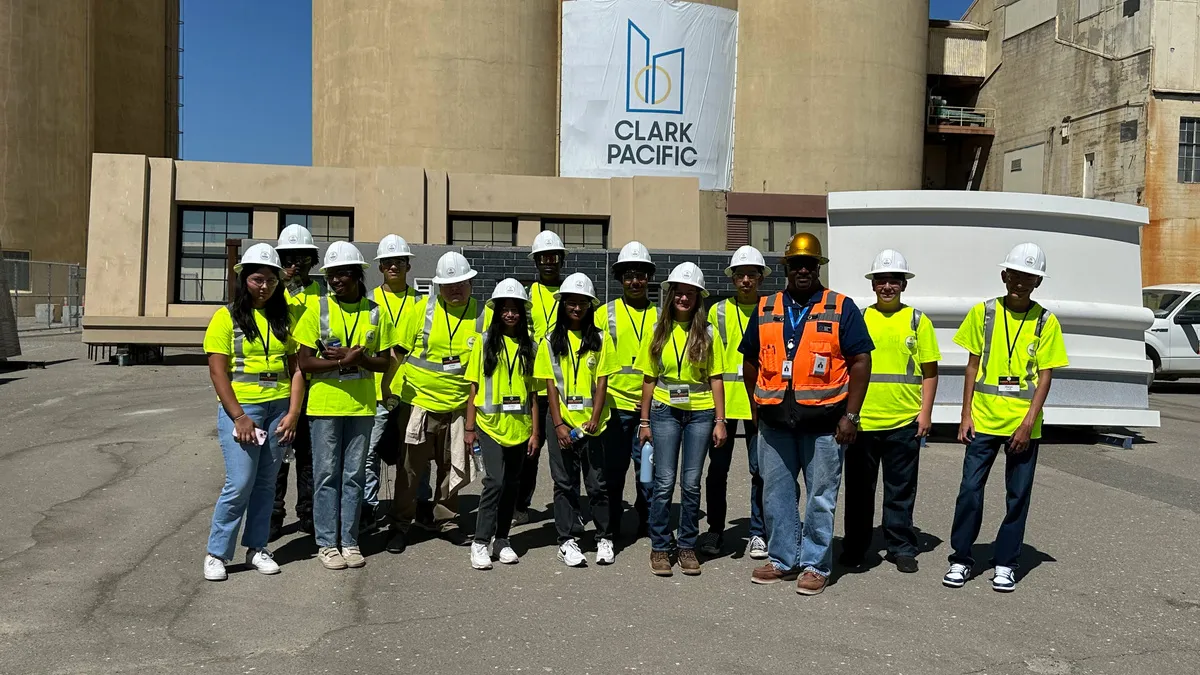This feature is a part of "The Dotted Line" series, which takes an in-depth look at the complex legal landscape of the construction industry. To view the entire series, click here.
Whether contractors are still using paper records or have made the switch to a semi or fully paperless system, knowing which documents to collect and maintain is critical to running a construction business.
In fact, many standard forms of agreement detail which documents contractors are expected to retain.
For example, in ConsensusDocs 900 - Standard Public-Private Partnership (P3) Agreement and General Conditions (Where the Basis of Payment is Milestone, Completion and Availability Payments), the contract specifically requires the concessionaire to keep all project “books, records and documents,” including originals. Not only is the concessionaire required to maintain that paperwork, but it also is obligated to let the other party or parties to the contract know where those documents are kept, typically for inspection purposes.
“In any construction dispute, the party with contemporaneous and complete records always has a leg up on the party who didn’t make documenting its work a priority.”

Joseph Devereux III
Attorney, Sandberg Phoenix
There are similar document retention requirements in the American Institute of Architects’ A102- 2017 Standard Form of Agreement Between Owner and Contractor where the basis of payment is the Cost of the Work Plus a Fee with a Guaranteed Maximum Price. Since the contractor’s payment depends on how much material, labor and other costs go into the project, then the owner is able to exercise its rights under the contract to inspect the contractor’s records.
The types of documents that must be maintained for at least three years are books, job cost reports, correspondence, blueprints, receipts, proposals, invoices, subcontracts and purchase orders.
No matter what’s spelled out in the contract, however, having access to the right paperwork can mean the difference between being able to prove a claim or defend against one.
“In any construction dispute,” said attorney Joseph Devereux III with the law firm of Sandberg Phoenix in St. Louis, “the party with contemporaneous and complete records always has a leg up on the party who didn’t make documenting its work a priority.”
However, out of all the documents that contractors are expected to maintain, there are some that stand out as especially important.
The contract
“In the course of a construction project,” Devereux said, ”it is important to keep a copy of the executed contract governing [the] scope of work.”
Even if the contract doesn’t spell out which documents to retain, it will provide, for instance, a roadmap for submitting change orders — the circumstances under which they will be granted, when to submit them, where to submit them and who will ultimately approve or reject requests, he said.
A contract or subcontract also contains vital information related to:
- Liquidated damages.
- The submission, approval and payment of invoices.
- When a contractor may stop work.
- Insurance requirements.
- The responsibilities of the owner to fund the job.
- How to address a multitude of issues that may arise on a project.
Of course, the owner, said attorney Daniel Felsen with Carlton Fields in Washington, D.C., is also going to insist on requiring the documents that best serve its needs, such as warranties and lien waivers.
Daily logs and reports
Daily reports and logs are critical when it comes to construction disputes, said attorney James Carney, also with Carlton Fields' Washington, D.C., office. They are a good account of what happens on a construction project from day to day and an excellent source of information about who might be at fault in the event of a delay or loss.
Some of this activity, said Joshua Atlas, partner at Saul Ewing Arnstein & Lehr LLP in West Palm Beach, Florida, could include how many employees and subcontractors were working on the project on a particular day and for how long, what work was completed and what kind of equipment was in use and when.
Subcontractors should also keep logs of construction activity for which they are responsible.
Meeting minutes
Some contractors hold daily meetings, others keep to a weekly meeting schedule. In either case, it’s important to keep a record of what is said.
“Meeting minutes are also critical in telling the story about what’s going on with the progress of the work,” Atlas said.
For subcontractors, he said, if there is a dispute on the project, they will want a record of why and for what they could be held responsible and the general contractor’s decisions regarding the dispute.
Many general contractors, said attorney Wm. Cary Wright of Carlton Fields in Tampa, Florida, circulate the meeting minutes among the attendees and allow a certain time period for comments before they are finalized for the project record.
If subcontractors are not offered a copy of the minutes, Felsen said, then they should confirm to the general contractor in writing discussions or actions related to their work.
Schedule updates, Carney said, are also among the most critical documents to maintain.
Technical documents
Technical documents include Requests for Information (RFIs) and their responses, submittals and shop drawings, Atlas said.
These track potential changes to the original scope of work and will help contractors determine whether they are entitled to additional time or money via change orders.
Also, contractors shouldn’t hesitate to create forms when necessary. For example, when it comes time for subcontractors to defend against back charges, Devereux said, they can create a standard, go-to form that can “quickly and efficiently explain” why the work differs from the original contract documents or why the project was delayed. “This form should be completed at the same time as the work or delay and be supported by notes, photos and communications,” he said.
Notice records
The requirements for giving notice about a range of issues are typically outlined in the contract — i.e. how many days a contractor has to notify the owner of a change and present a change order — and, according to Atlas, notice records might be one of the most important documents of all.
“That’s the first thing we ask for — what kind of documentation do we have on this issue,” he said. “’Did you give notice?’ Then we start to reconstruct what happened around the issue. That’s how you prove or disprove a claim.”
So, what’s the best way to collect and store these critical documents?
“Preparation is key to success,” Devereux said. “Implementing a document retention policy before a dispute arises increases your chances of success and minimizes the risk of important documents being lost or misplaced. It also makes compiling the documents more efficient, less burdensome, and less expensive, allowing the contractor to devote his time to doing what he does best.”
If it looks like there might be an impending legal dispute, Devereux said, it’s important that a contractor contact all employees who worked on the project in question and reinforce the need to retain project-specific documents and communications.
"The prudent contractor” he said, “should also appoint one person to gather and compile the project documents and answer questions related to the manner and scope of the document production.”
And if contractors aren’t already maintaining records electronically, Wright said, they might want to rethink their approach. Most contractors should maintain their documents electronically, just like other businesses are doing in their day-to-day operations. “A lot of projects are paperless,” Wright said.
And document management systems, he said, aren’t only for large contractors. Affordable packages are available to companies of all sizes.
Whether a contractor decides to employ a paper or electronic system, the overriding rule is to be thorough in collecting and storing documents.
“Good, detailed contemporaneous documentation of a project,” Carney said, “is a contractor’s best friend, whether to support an affirmative claim or to defend a claim.”
The Dotted Line series is brought to you by AIA Contract Documents®, a recognized leader in design and construction contracts. To learn more about their 200+ contracts, and to access free resources, visit their website here. AIA Contract Documents has no influence over Construction Dive's coverage within the articles, and content does not reflect the views or opinions of The American Institute of Architects, AIA Contract Documents or its employees.


















